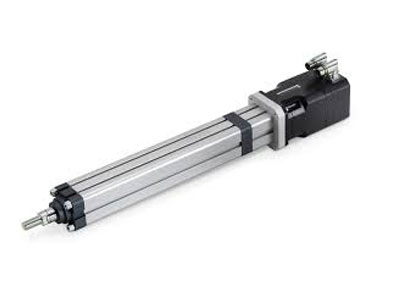Key Takeaway
Linear and rotary actuators are essential components in motion control systems, providing precise control and high force output. Understanding their operation and benefits is crucial for selecting the right actuator for your needs.
Consider factors such as motion type, load, and environment when selecting an actuator. Proper selection ensures efficient and reliable operation, enhancing productivity and reliability.
Definitions and Distinctions
Linear and rotary actuators are both devices that convert energy into mechanical motion, but they do so in different ways and serve distinct purposes. A linear actuator produces motion in a straight line, typically by using mechanical, pneumatic, or hydraulic force to push or pull an object along a fixed path. This makes linear actuators ideal for applications that require linear displacement, such as lifting, sliding, or positioning components along a specific axis.
In contrast, a rotary actuator generates rotational motion by converting energy into torque, which is then used to rotate an object around an axis. Rotary actuators are essential for applications that require turning, such as rotating gears, adjusting valves, or moving robotic arms. Unlike linear actuators, which move in a straight line, rotary actuators offer continuous rotational motion, making them ideal for tasks that require precision and control in rotational movements.
The key distinction between the two types of actuators lies in the direction of motion they produce. While linear actuators are suited for pushing or pulling tasks, rotary actuators are best for applications requiring rotational movement. Understanding these distinctions allows engineers to select the appropriate actuator based on the needs of a particular application, whether linear or rotary motion is required to achieve the desired outcome.

Key Features of Linear Actuators
Linear actuators are designed to create straight-line motion with high precision and efficiency. Below are their key features:
1. Types of Power Sources: These actuators can be powered by hydraulic fluids, pneumatic pressure, or electricity, making them versatile across applications.
2. High Force Capabilities: Hydraulic linear actuators, in particular, can generate significant force, making them suitable for heavy-duty tasks.
3. Compact Design: Despite their ability to handle heavy loads, many linear actuators have a compact design, allowing them to fit into tight spaces.
4. Control and Accuracy: Linear actuators provide precise movement, which is essential in applications like robotics, medical devices, and manufacturing equipment.
Key Features of Rotary Actuators
Rotary actuators are specialized for producing rotational motion, making them ideal for tasks requiring torque and angular positioning. Key features include:
1. Types of Rotational Movement: They can perform partial (limited angle) or full rotation, offering flexibility in motion control.
2. Torque Generation: Rotary actuators provide high torque output, essential for operating valves, levers, or robotic joints.
3. Compact Mechanism: With a design optimized for rotational tasks, rotary actuators can handle high loads without occupying much space.
4. Power Sources: Similar to linear actuators, rotary versions can use hydraulic, pneumatic, or electric power to meet specific application needs.
These features make rotary actuators ideal for industries like aerospace, oil and gas, and robotics, where precise angular movement is critical.
Applications and Industries Served
Linear and rotary actuators are used across numerous industries due to their versatility:
Linear Actuator Applications:
Medical Equipment: Hospital beds and patient lifts rely on linear actuators for smooth motion.
Industrial Automation: Conveyor systems and robotic arms use these actuators for precise linear movement.
Agriculture: Tractors and harvesters use linear actuators for tasks like lifting and adjusting components.
Rotary Actuator Applications:
Oil and Gas: Operate valves and drilling equipment with precision.
Robotics: Enable the rotation of joints and parts for intricate tasks.
Aerospace: Control flaps, landing gear, and other rotating mechanisms.
These actuators enable a wide range of tasks, from precise adjustments to heavy-duty industrial operations, showcasing their adaptability.
Factors to Consider When Choosing
Selecting the right actuator depends on several factors, including:
1. Type of Motion Required: Determine whether linear or rotational movement best suits your application.
2. Load Requirements: Assess the force or torque needed to handle the task.
3. Space Constraints: Choose an actuator that fits within the available space without compromising efficiency.
4. Power Source: Decide between hydraulic, pneumatic, or electric options based on energy availability and cost.
5. Precision and Speed: Applications requiring high precision or speed may dictate the type of actuator suitable for the job.
Considering these factors ensures optimal performance, cost-effectiveness, and reliability in your chosen actuator.
Conclusion
Linear and rotary actuators are essential components in motion control systems, providing precise control and high force output. Understanding their operation and benefits is crucial for selecting the right actuator for specific applications.
By considering factors such as motion type, load, and environment, users can effectively integrate actuators into their systems, enhancing productivity and reliability.
